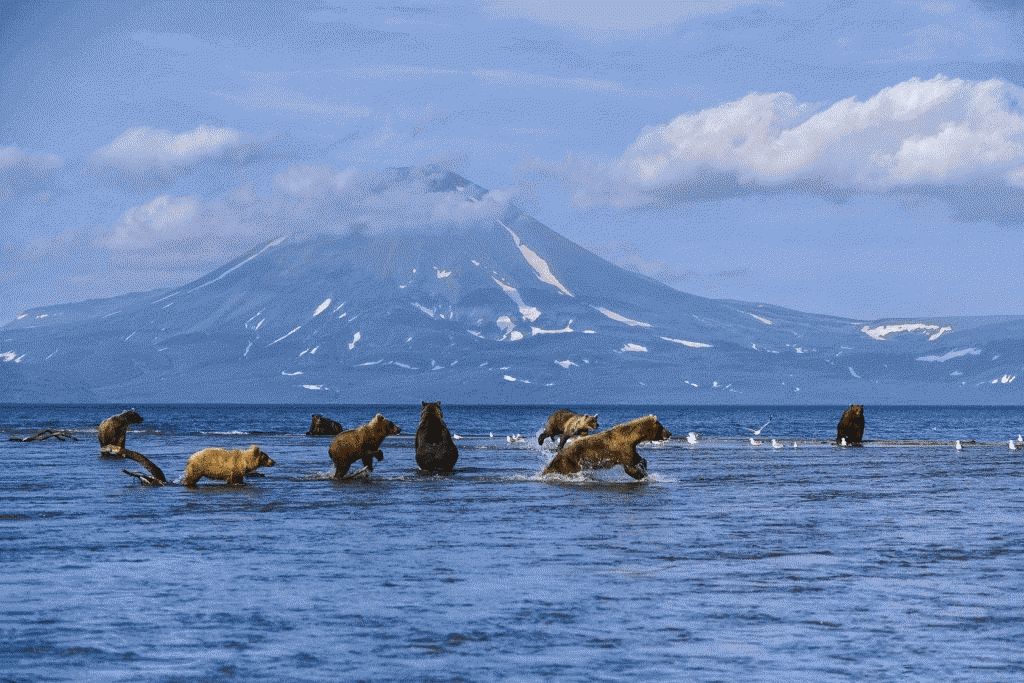Страна:
Регион:
Другие названия:
Значение:
Время визита:
Цена:
Почему Топ:
Крупное озеро с нерестом нерки, одно из самых известных на Камчатке.
Описание:
Crater lake on the territory of the South Kamchatka Federal Reserve. The reservoir is surrounded by rocky shores and impassable thickets of bushes. In size, this giant is second only to Kronotsky. Kuril Lake was formed more than 8 thousand years ago as a result of a powerful eruption and the subsequent subsidence of the earth’s crust. At that time, powerful eruptions occurred in the region, the ash from which is found in the soil of the Magadan region and even in South America. Scientists believe that the caldera-forming eruption near Kuril Lake was the largest eruption in Kamchatka during the Holocene era. The eruptions formed a giant basin-lake, the maximum depth of which is 316 meters, which is 200 meters below the level of the World Ocean. Many rivers and streams flow into Kuril Lake, and one river flows out, Ozernaya.
The lake is a unique biological system, and today it is one of the largest spawning grounds for salmon — sockeye salmon — in Eurasia. Typically, young sockeye salmon feed in lakes for one to three years, after which they migrate to the Pacific Ocean, where they live for another 2–3 years and return to their native spawning grounds. Mass spawning of sockeye salmon continues from July to March. When the fish goes up against the flow of the river, the water in it literally boils. The number of sockeye salmon varies from 2 to 6 million individuals, and this attracts predators, especially bears, for which these places are a real paradise. At the end, more than 200 brown bears gather along the shores of the lake; river otters and foxes readily feed on salmon. Kuril Lake is the largest wintering place for birds of prey; there are up to 700 Steller’s sea eagles, up to 150 white-tailed eagles and about 50 golden eagles here, in addition, several thousand pairs of slaty gulls live here far from the sea. Both large birds, ducks, and even small forest birds — puffy duck, nuthatch, and lesser spotted woodpecker — partly feed on sockeye salmon or its eggs.
There are small islands in the lake: Nizkiy, Glinyany, Chayachy. The largest island, Samang, is a kind of haven for mother bears and their children. Many females swim there for the period of birth of their offspring, and when they gain strength, they return to the “mainland”. Males are found here less often, but they also do not mind spending the winter in such cozy places.
Of the freshwater lakes of Kamchatka, it is the second largest (area 12.5 x 8 km). Area: 74.720001 sq. km., volume: 3597.8601 cubic meters, average depth: 48.200001 m, shore length: 53.450001 m, height: 80 m.
Категории:
Тэги:
Метки:
Опасно
Обязательно посетить
Платно
Темы:
Зачем посещать:
Интерес:
Физподготовка:
Лучшее время:
Увидеть:
Доступ:
Access details:
from Petropavlovsk-Kamchatsky to Lake by SUV 4*4 — 1 day one way
from Petropavlovsk-Kamchatsky to Lake by Helicopter — 1 hour one way
Roads:
Info:
Connection:
There is no cellular connection. Only satellite connection.















